The Orient Express is famously remembered for linking Paris and Istanbul. Over time, additional, less “oriental” routes were introduced, weaving a vast network of train connections across Europe.
- The Initial Journey
- The Orient Express Original Route Map
- Key Stops on the Orient Express Original Route
- Paris’ Gare de l’Est: The Departure Point
- Strasbourg: Gateway to the European Continent
- Munich: Bavarian Elegance
- Vienna: Imperial Splendor
- Budapest: The “Pearl of the Danube”
- Bucharest: The Elegance of Romania
- Istanbul Sirkeci Terminal: European Orientalism
- The route for ‘Murder on the Orient Express’
- Does the original Orient Express still run?
- Read more
Even the original inaugural route underwent changes, with the “over the sea” segment eventually removed. Let’s dive into the evolution of the Orient Express original route. Explore the route Agatha Christie traveled, which was later immortalized in her timeless mystery. Discover how you can relive this legendary train experience today.
The Initial Journey
On June 5, 1883, the Orient Express made its first-ever trip from Paris to Vienna, marking a significant milestone in railway history. Departing from Paris’ Gare de l’Est, the train traveled through Strasbourg and Munich before reaching Vienna.

This initial route covered approximately 1,243 miles (2,000 kilometers) and took about 30 hours to complete. The success of this maiden voyage paved the way for the extension of the route to Istanbul later that year, establishing the Orient Express as a pioneering force in international rail travel.
On October 4, 1883, the Orient Express started its inaugural journey from Paris to Constantinople, carrying 40 passengers.
This 7-day round trip marked a significant milestone in European travel, connecting the West to the East in an unprecedented manner. So 3-day one-end is the timeline to keep in mind as it’s still actual for the modern days.
The Orient Express Original Route Map
This iconic route spanned approximately 1,700 miles, traversing through 7 countries: France, Germany, Austria, Slovakia, Hungary, Romania, and Bulgaria before reaching its final destination in Turkey.

The train’s route included stops in Strasbourg, Munich, Vienna, Budapest, and Bucharest, before reaching Giurgiu in Romania. From there, passengers crossed the Danube by ferry to Ruse, Bulgaria, continued by train to Varna, and completed the journey to Constantinople by ferry across the Black Sea.
This combination of rail and sea travel redefined long-distance journeys, offering a new level of comfort and efficiency. The success of this complex trip made the Orient Express a symbol of luxury and adventure in the decades to come.
Key Stops on the Orient Express Original Route
As mentioned above, the Orient Express path ran through 7 countries, making stops in the most prominent and busiest European megapolises. Even now, over 100 years later these cities have not lost their political and economic importance and attractiveness for tourists.
Paris’ Gare de l’Est: The Departure Point
Gare de l’Est, originally known as the “Embarcadère de Strasbourg,” was opened in 1849 by the Paris-Strasbourg Railway Company. It was officially inaugurated in 1850 by Louis-Napoléon Bonaparte.
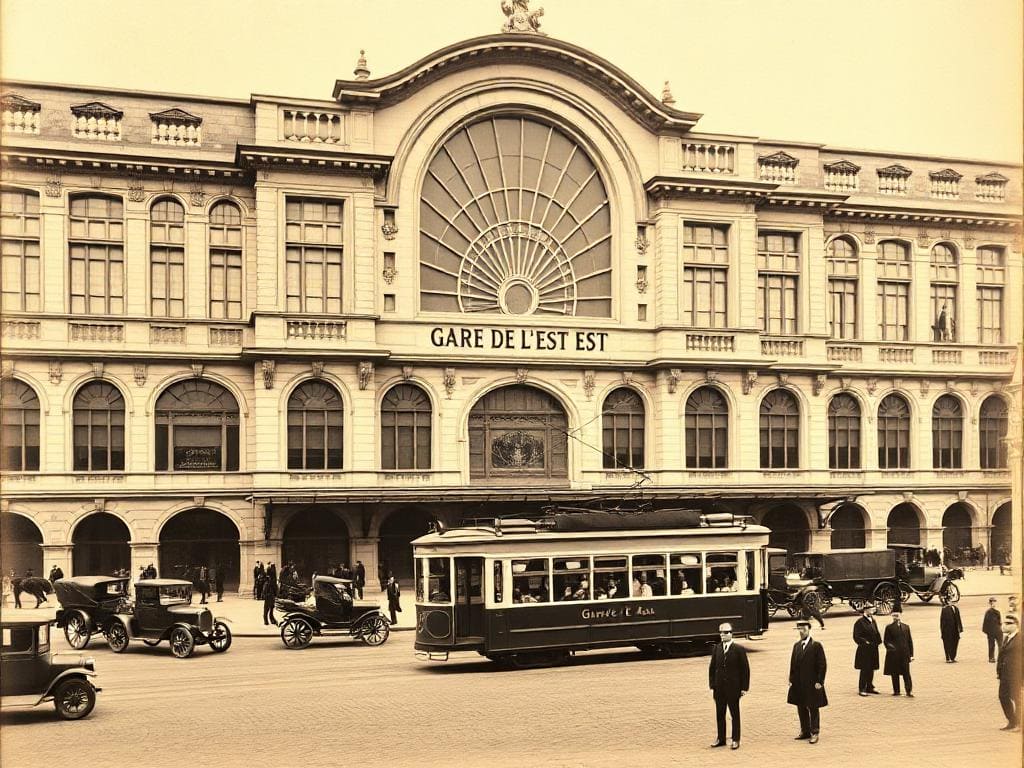
Designed by François Duquesnay, the station’s neoclassical architecture featured a prominent central pavilion, which still serves main-line trains today. In 1854, it was renamed “Gare de l’Est” as services expanded eastward to Mulhouse.
Over time, the station saw multiple expansions, including major works in the late 19th and early 20th centuries, doubling its capacity by 1931.
Location Details
However, today it’s not the most important or busiest, it’s just 1 of the 7 main railway stations in Paris, so only its historic heritage and the legacy of Orient Express are making it special.
Strasbourg: Gateway to the European Continent
Sitting at the very border of France and Germany on the river Rhine, Strasbourg has always played a prominent political role throughout the centuries. Today it hosts 20+ international institutions, such as the Council of Europe and the European Parliament. Strasbourg is considered the legislative and democratic capital of the EU.
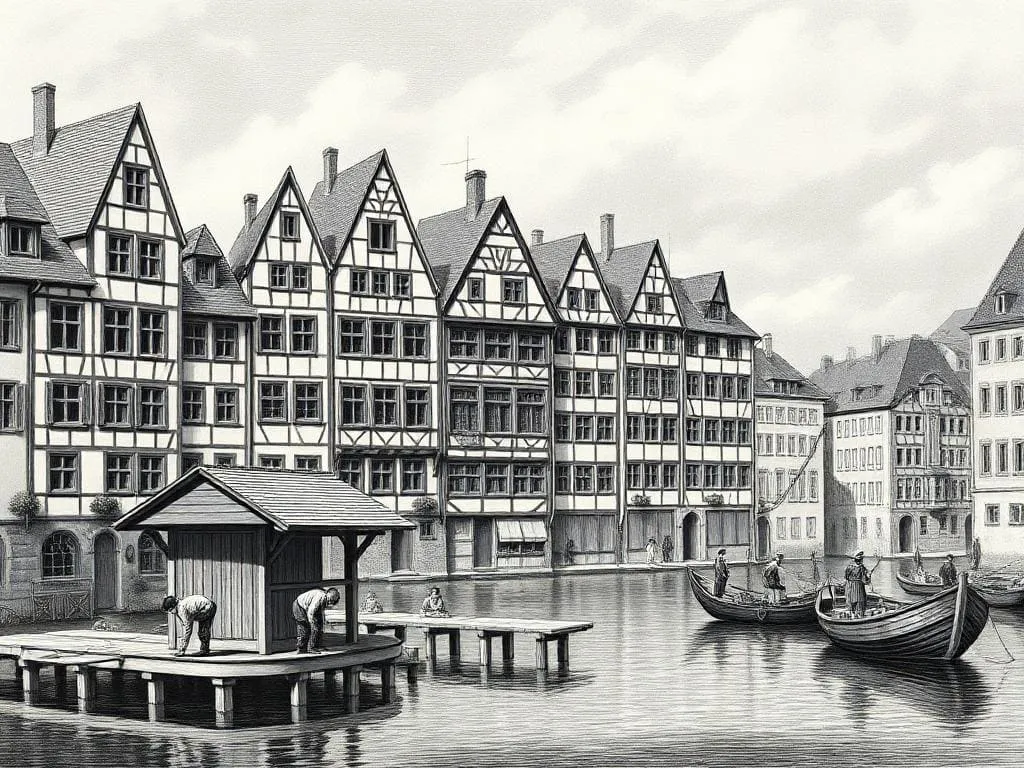
The city’s historic center, the Grande Île, is a UNESCO World Heritage site, home to the iconic Strasbourg Cathedral. The cathedral was completed in 1439 and used to be the tallest building in the medieval world, today being a masterpiece of Gothic design. Its astronomical clock, though less famous than the one in Prague, is a great example of Renaissance engineering.
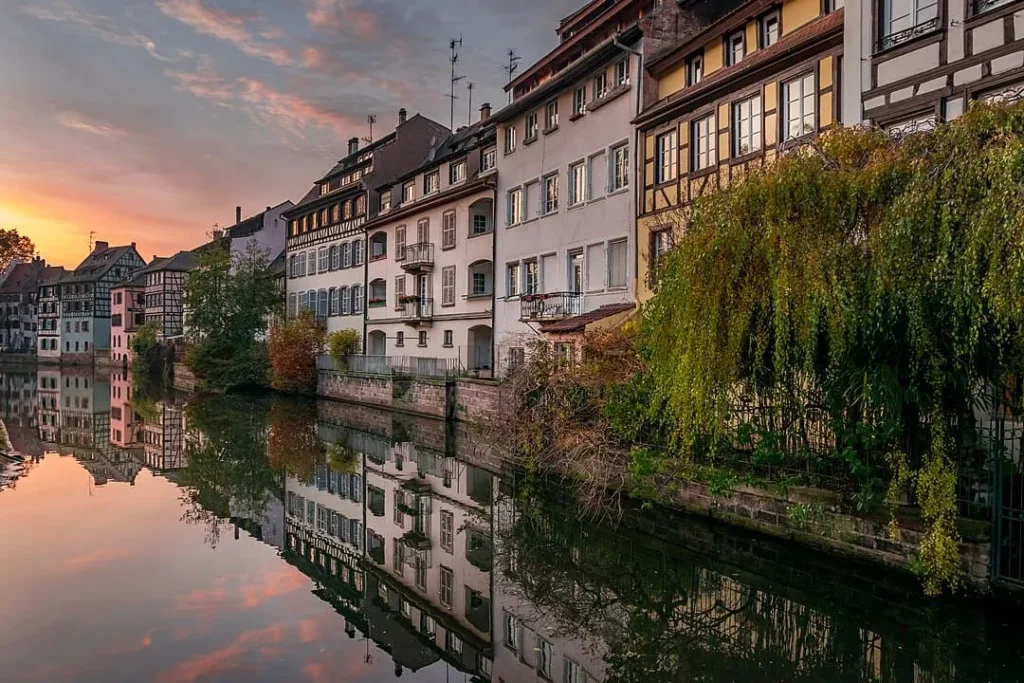
The district of La Petite France, once home to tanners and fishermen, is a must-see for its charming canals and historic buildings. Another highlight is the Palais Rohan, an 18th-century palace that now houses three museums covering fine arts, archaeology, and decorative arts.
Munich: Bavarian Elegance
Today Munich along with Frankfurt and Amsterdam is one of the key air hubs for those flying overseas and the ones coming to Europe. However, Munich has a lot more to offer.
Founded in 1158, it became the official residence of the Wittelsbach dynasty in the 13th century, solidifying its status as the Bavarian capital.
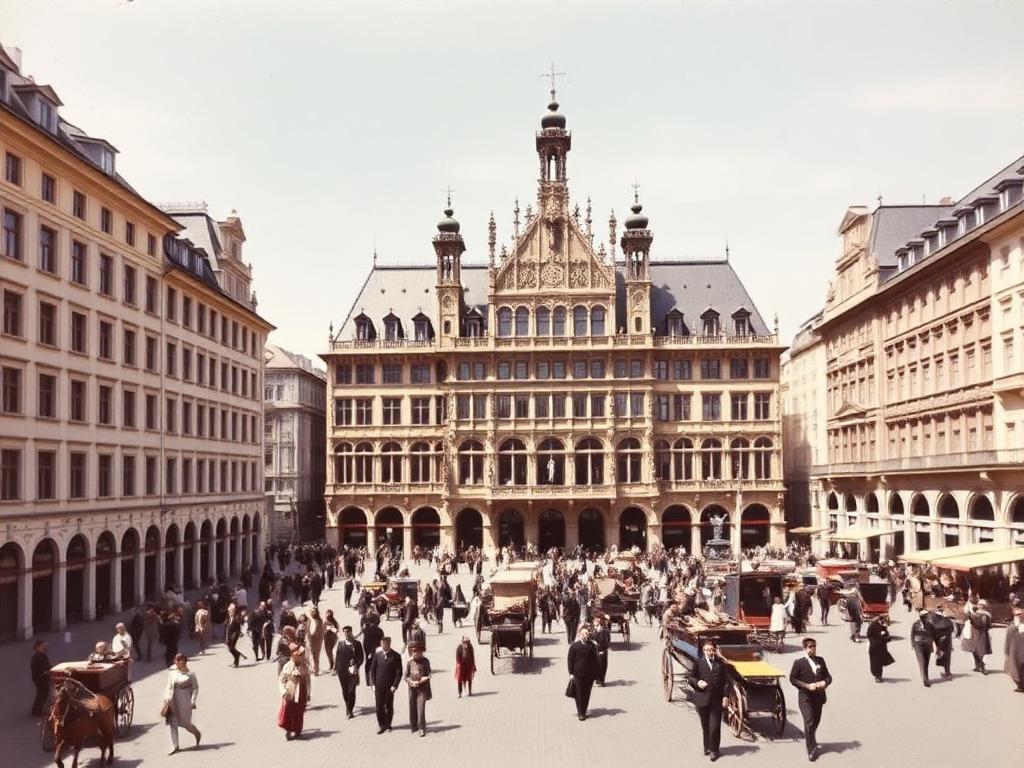
During the Renaissance, Munich flourished as a center of arts and architecture, with landmarks like the Frauenkirche and the Residenz reflecting its growing wealth and influence.
By the 18th century, under the rule of Elector Maximilian I and later Elector Maximilian III Joseph, the city became a key player in the Holy Roman Empire, known for its contributions to the Baroque and Rococo movements.
The Marienplatz, the city’s central square since the 12th century, is home to the Neues Rathaus, with its famous Glockenspiel chime that draws crowds daily. Nearby, the Frauenkirche, a Gothic cathedral with its distinctive twin towers, offers panoramic views of the city.
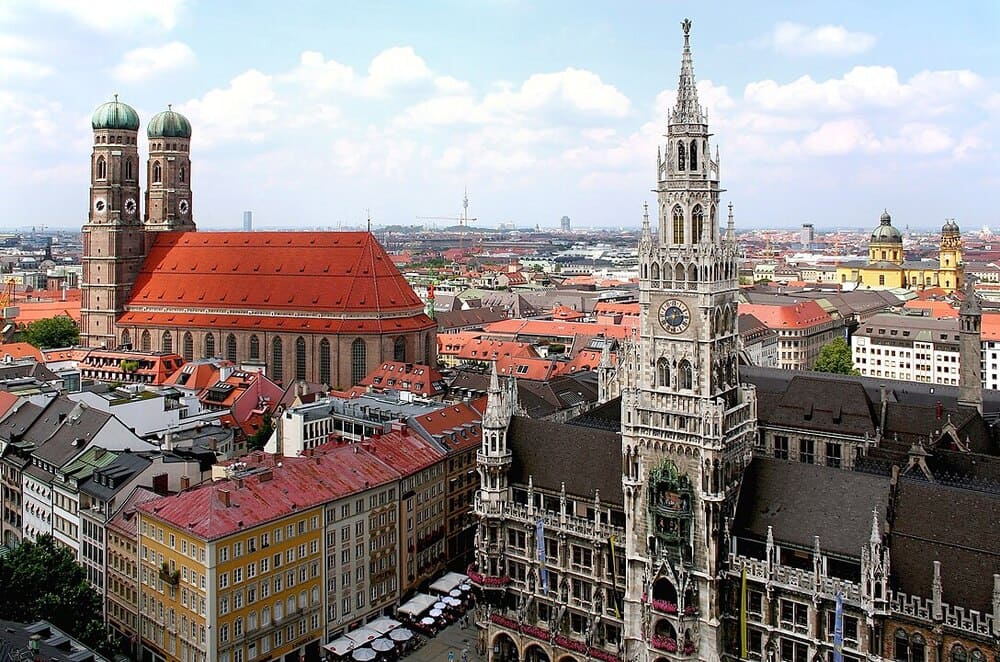
Munich’s rich royal history is evident in the Residenz, a sprawling palace complex showcasing centuries of Bavarian art and architecture. The Nymphenburg Palace, the former summer residence of Bavarian monarchs, is another must-visit for its ornate interiors and expansive gardens.
For a glimpse of Munich’s role in the early days of the automobile, the BMW Museum offers an interactive journey through the brand’s history. Visitors can also explore the Viktualienmarkt, an open-air market that has been a staple of Munich life for over 200 years.
Vienna: Imperial Splendor
Vienna, Austria’s capital, has been at the heart of European history for centuries. Today, it’s not just about the past—Vienna remains a center for international diplomacy, hosting organizations like the United Nations.

As the former seat of the Habsburg Empire, it’s packed with historical landmarks like the Hofburg Palace, where emperors once ruled, and Schönbrunn Palace, their lavish summer home. St. Stephen’s Cathedral, with its towering spire, has been a key part of the city’s skyline since the Middle Ages.
In the 19th century, Vienna became a cultural powerhouse, home to legendary composers like Mozart, Beethoven, and Strauss.
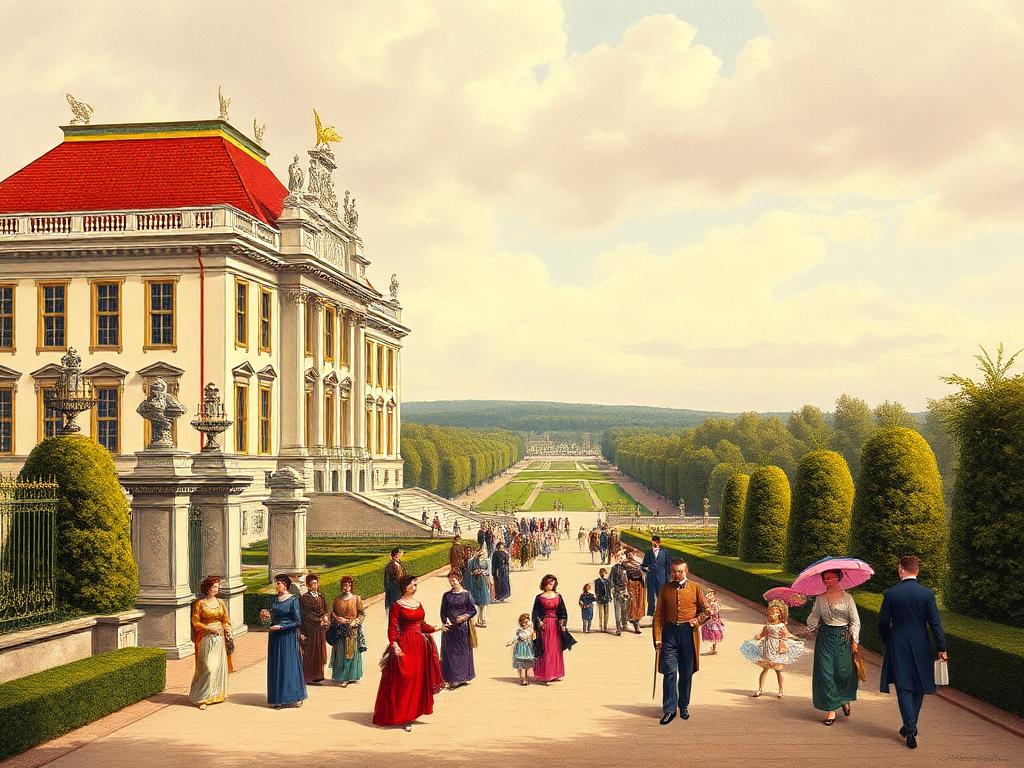
The Ringstrasse, a grand boulevard built during this period, is lined with iconic buildings like the Vienna State Opera and the Parliament. Vienna also hosted the Congress of Vienna in 1815, which redrew Europe’s borders after the Napoleonic Wars.
Budapest: The “Pearl of the Danube”
Budapest, Hungary’s capital, was officially established in 1873 (not long before it became a checkpoint for the Orient Express)
It was the result of a merge of the smaller towns of Buda, Pest, and Óbuda. Its location on the Danube River made it a strategic center for trade and transportation, particularly during the Austro-Hungarian Empire. The city’s iconic Parliament Building, inspired by the British Houses of Parliament, was completed in 1904 and remains one of the largest legislative buildings in Europe.

Budapest’s thermal baths trace back to Roman and Ottoman times, with sites like the Rudas and Király baths still in operation. The Castle District, anchored by Buda Castle, was once the residence of Hungarian kings and now houses the Hungarian National Gallery and the Budapest History Museum. The Chain Bridge, completed in 1849, was the first permanent bridge connecting Buda and Pest, symbolizing the city’s economic growth.
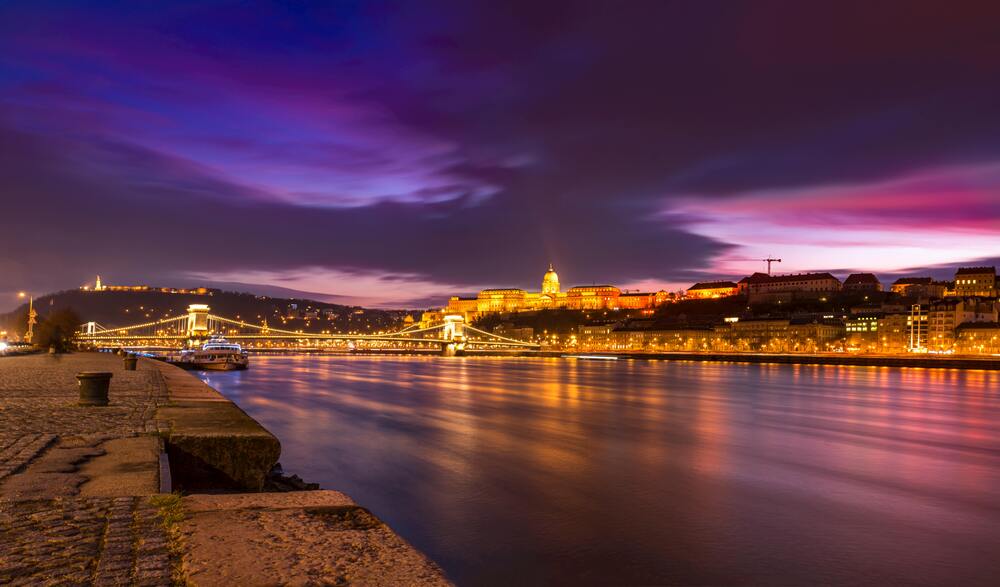
During World War II, Budapest suffered heavy damage, particularly to its bridges and historic buildings. The city also played a central role in the 1956 Hungarian Uprising against Soviet rule. Today, remnants of these events are visible in memorials and preserved sites, such as the Shoes on the Danube Bank, commemorating victims of the Holocaust.
Bucharest: The Elegance of Romania
Bucharest earned the nickname “Little Paris” in the 19th century thanks to its wide boulevards and French-inspired architecture. One of the city’s most notable landmarks is the Palace of the Parliament, completed in 1997. It’s the second-largest administrative building in the world, after the Pentagon, and a reminder of Romania’s Communist era under Nicolae Ceaușescu.
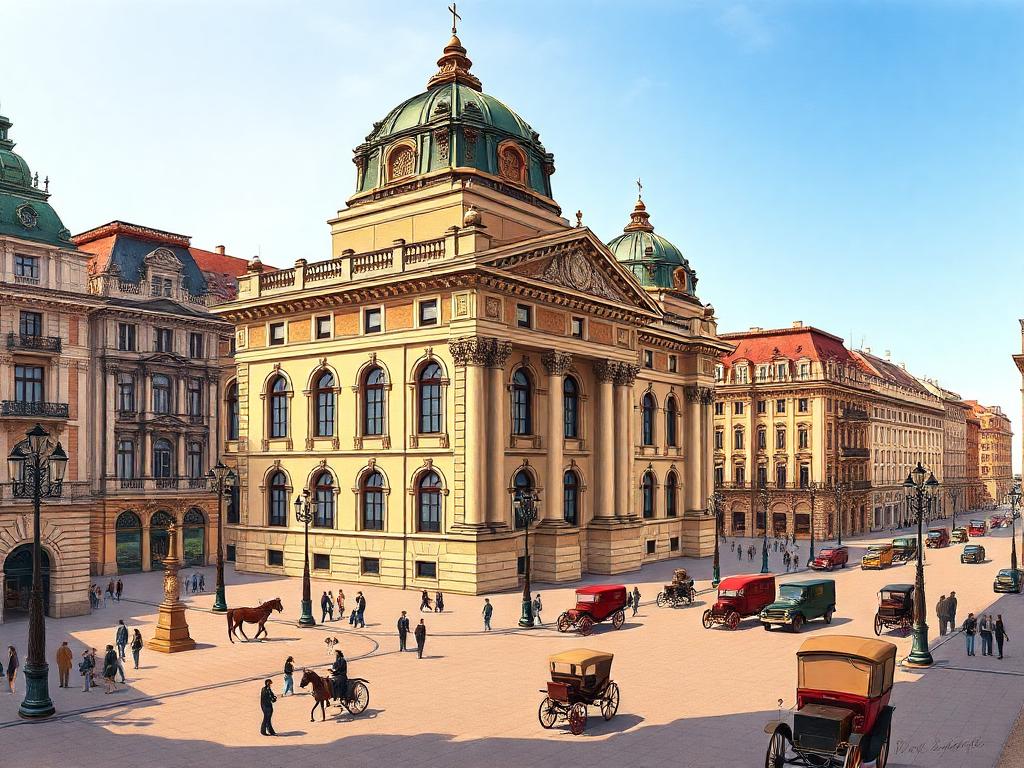
The city’s history is also reflected in the Old Town, where buildings from the 15th and 16th centuries, such as the Old Princely Court, can still be found. This was once the residence of Wallachian rulers, including Vlad the Impaler.
Bucharest is home to the Patriarchal Cathedral, the seat of the Romanian Orthodox Church, which has stood since the 17th century.

The Village Museum, an open-air collection of traditional Romanian houses, showcases rural life from different regions of the country.
Calea Victoriei, one of the city’s main avenues, is lined with historic buildings, luxury shops, and cafes. For those exploring the Old Town, Lipscani Street offers a mix of historic charm and modern energy, with its cobblestone streets, restaurants, and nightlife.
Additionally, Bucharest boasts expansive green spaces like Herăstrău Park, where visitors can enjoy boat rides on the lake or visit the nearby Arc de Triomphe, a nod to the city’s “Little Paris” era.
Istanbul Sirkeci Terminal: European Orientalism
Sirkeci Terminal, located on Istanbul’s historic peninsula near the Golden Horn, was built in 1890 specifically to serve as the final stop for the Orient Express. Designed by German architect August Jasmund, the terminal’s architectural style blends Orientalist and European influences, reflecting its role as a gateway between continents. The station features distinctive arched windows and elaborate tile work.

Sirkeci Terminal played a crucial role in connecting the European rail network with Istanbul, complementing Haydarpaşa Terminal on the Asian side of the Bosporus. Today, it still remains the major railway station in Istanbul.
Location Details
The route for ‘Murder on the Orient Express’
The Simplon route, introduced in 1919, marked a significant shift for the Orient Express. For the first time, the train connected Paris to Istanbul through Milan and Venice, crossing the Simplon Tunnel.
Completed in 1906, the Simplon Tunnel was one of the longest rail tunnels of its time, stretching over 19 kilometers (12 miles) beneath the Alps. Its construction was a major achievement, reducing travel time and eliminating the need for more treacherous mountain passes.
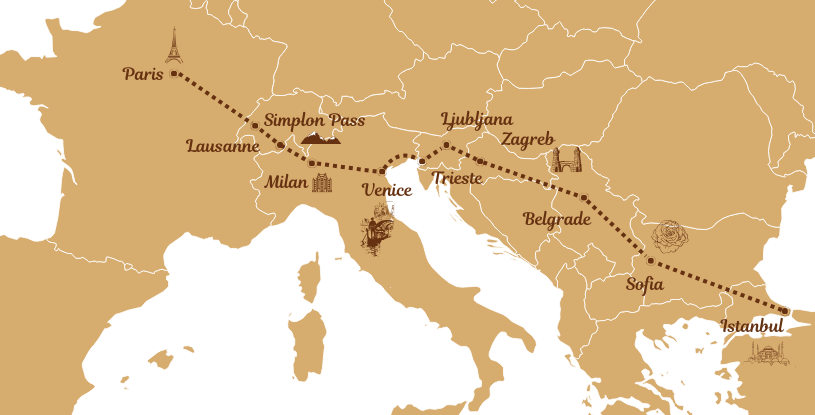
This new route of the Orient Express not only improved efficiency but also offered a safer and more reliable journey through the challenging Alpine terrain. The tunnel’s strategic location provided a vital link between Western and Southeastern Europe, bypassing political tensions in the post-World War I era. The Simplon route quickly became a preferred path, solidifying its importance in both commercial and passenger rail transport.
The line also provided the setting for Agatha Christie’s Murder on the Orient Express, published in 1934. The pivotal events of the novel take place near Belgrade, where the train is brought to a halt by heavy snow, creating the perfect environment for the unfolding mystery. This section of the route highlights its remote and often unpredictable conditions, adding to its historical significance.
Does the original Orient Express still run?
The short answer is – Yes! The modern reincarnation of CIWL service – Venice Simplon Orient Express offers the iconic route, along with many others. Despite the name, the current Orient Express route from Paris to Istanbul doesn’t go through the Simplon pass. The Simplon tunnel is used for the most popular route – London – Venice.

VSOE is running more or less the original route. Of course, today, no one uses the Orient Express for business-related purposes. It’s only a luxury leisure trip to celebrate a honeymoon or anniversary.
The whole experience takes 5 nights, with 2 nights spent in the hotels in Budapest and Bucharest. The service also includes city tours in Bucharest and Budapest, a Danube cruise, and a visit to Peleș Castle in Romania.
It doesn’t make any more stops except Varna, where the guests attend a private estate for aperitif.
What was the original route of the Orient Express?
The first-ever trip was from Paris to Vienna. The inaugural route from Paris to Istanbul went from Paris through Strasbourg, Munich, Vienna, Budapest, and Bucharest into Istanbul.
What is the route of the Orient Express today?
Today, the original route (from Paris through Strasbourg, Munich, Vienna, Budapest, and Bucharest into Istanbul) is still in operation.
What are the Orient Express prices (Paris to Istanbul)?
The prices for the 2025 season start at £17,500 / €20,955 / $22, 895 per passenger with 2 people in a cabin. The suite comes at £38,000 / €45,500 / $48,000. Grand suite at £61,200 / €73,283 / 77,274
Where does the Orient Express begin and end?
Begins in Paris and ends in Istanbul
How many nights is the Orient Express?
3 days, 2 nights on the train itself, but the whole journey is 5 days, with the hotel sleepovers.
What is the longest trip you can take on the Orient Express?
The longest is Paris to Istanbul and return, which takes 5 days







Comments